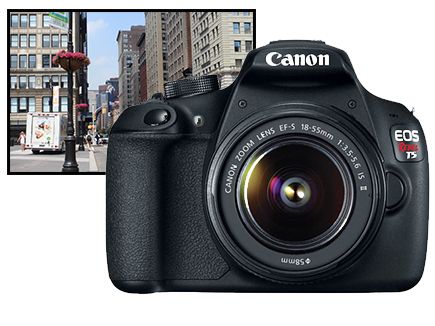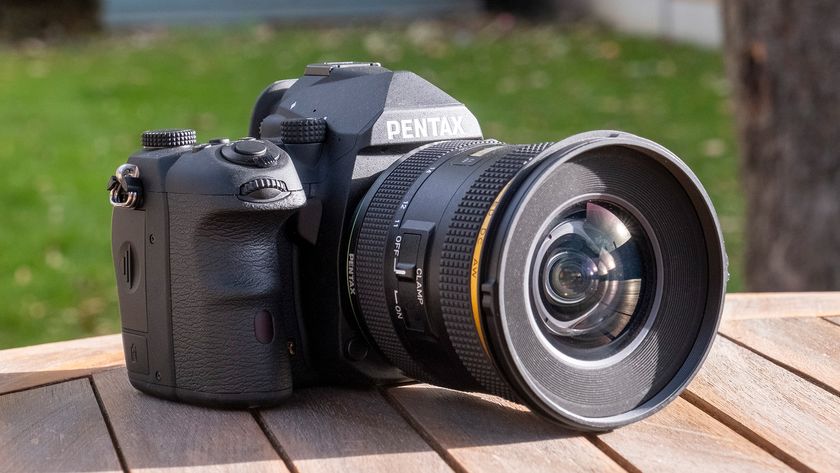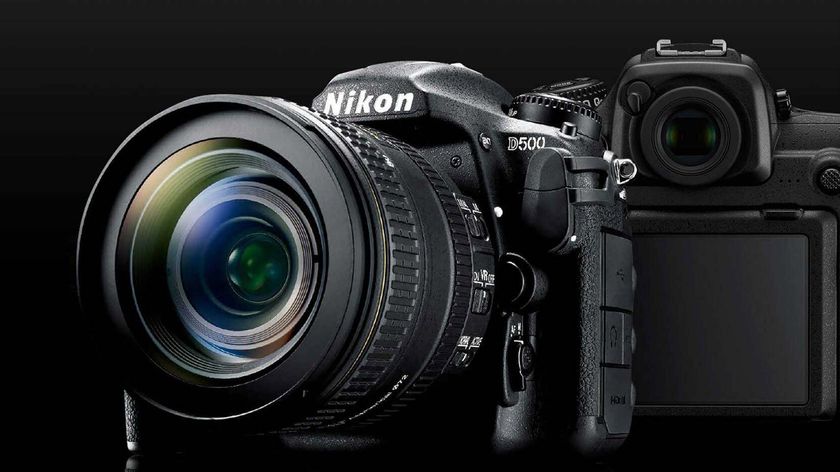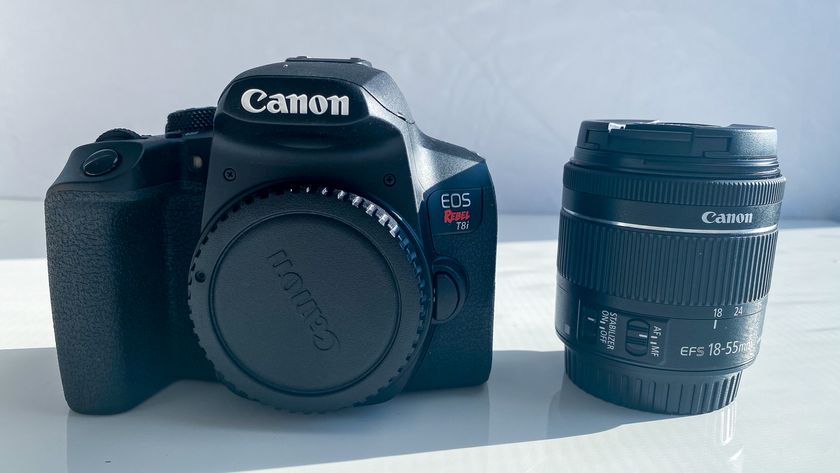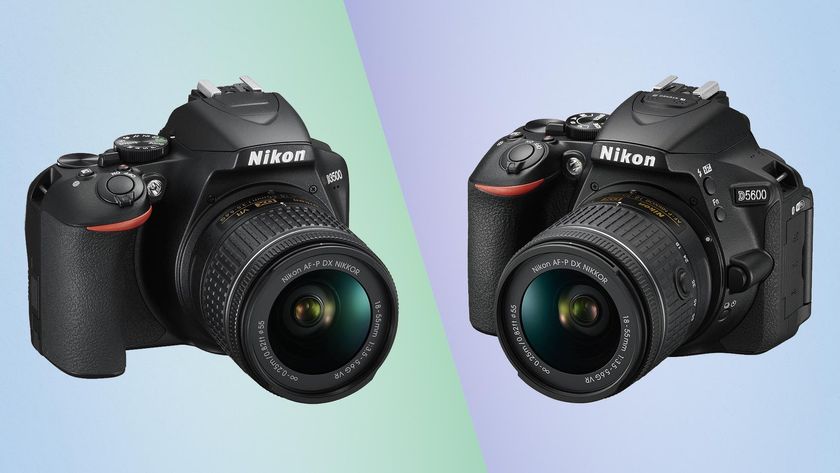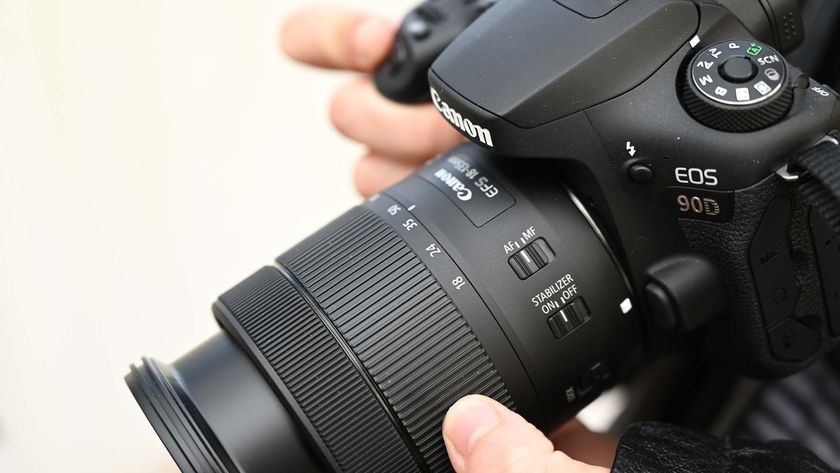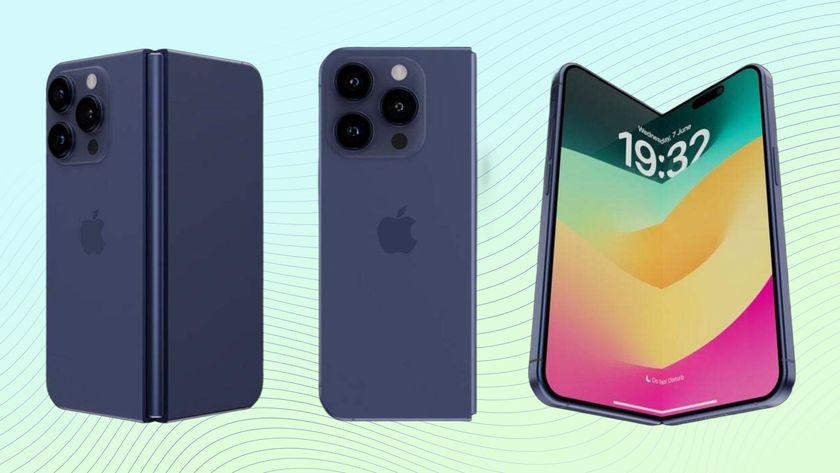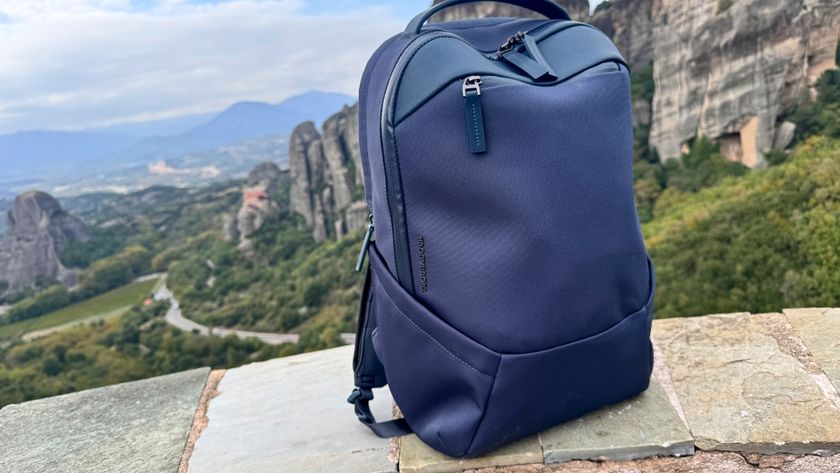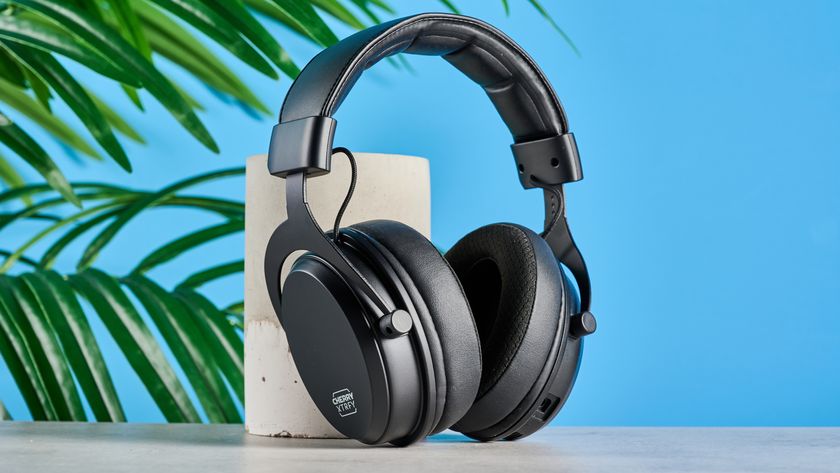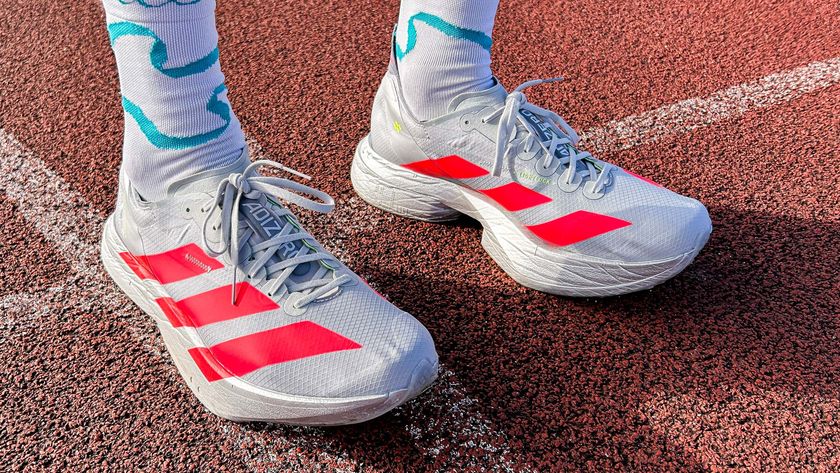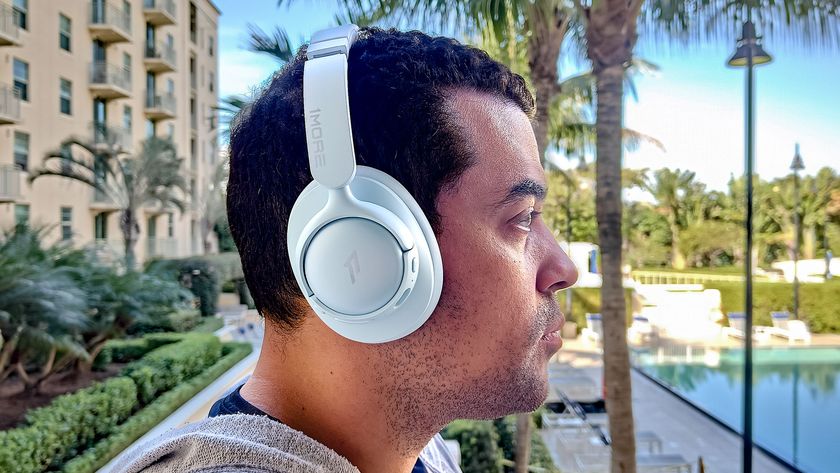Tom's Guide Verdict
Canon's Rebel T5 DSLR is a solid camera for those looking to take a dip into semi-pro photography, but video focusing could be better.
Pros
- +
Compact, light body
- +
Easy-to-access controls
- +
Excellent image quality in good light
Cons
- -
Some graininess at high ISOs and in low light
- -
Poor autofocus in video
- -
Some lag when taking multiple consecutive shots
Why you can trust Tom's Guide
I've been in love with DSLRs since I first took a photo on a friend's Canon Rebel T2i in 2009. I actually shivered when I saw the professional-looking image with its crisp detail, slightly blurred background and gorgeous colors. After I eventually bought the T2i that same year, Canon's beginner-friendly Rebel served me well in my foray into photography.
Canon's latest Rebel, the T5 ($550 list price), is not all that different from the T2i, but it's a step up from its predecessor in that price range, the T3. The T5 carries a sharper 18-megapixel APS-C format CMOS sensor, up from 12.2 megapixels on the T3. They have the same ISO 100 - 6400 light sensitivity range and shutter speeds of between 1/4000 to 30 seconds, but the T5 shoots 1080p videos, while the T3 only captures 720p clips.
Image Quality
In general, the Rebel T5 provided good picture clarity and color, especially in well-lit situations. We tested the camera with the bundled image-stabilized 18-135mm, 7.5X zoom kit lens as well as a 35mm L series f/1.4 prime (non-zooming) lens. The high-performance prime allowed us to see the maximum quality the camera is capable of.
MORE: How to Take Great Pictures with DSLR and Mirrorless Cameras
Bright light results
The T5 performed ably in optimal light conditions, snapping vivid color and sharp images. We used both aperture and shutter priority to test the camera's ability to set the right levels for a properly exposed picture, and the T5 did this well for the most part.
Our shot looking up Park Avenue was evenly exposed and sharp, with yellow cabs, tan buildings and blue sky all accurately depicted. This was especially impressive because there was a white van on the left of the frame and darker buildings in the center. A less-capable camera might have overexposed the van or underexposed the darker parts of the image such as distant buildings.
(Click on the images below for larger versions)
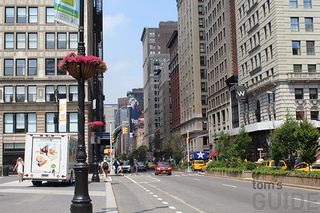
In close-up shots, the Rebel T5 rendered crisp details, such as the texture of my skin under a fading temporary tattoo on the back of my hand. (This was taken before the World Cup semifinals, proving my loyalty and clairvoyance.)

The Rebel T5's color reproduction was also solid. Colorful flags hanging above a bar in Hell's Kitchen were reproduced accurately, as were the different hues of green on the store's awning and adjacent trees.
Some detail, such as the faces of people under the awning and the edges of the flags, were lost in the darkness. On a more advanced camera, you'd get the option of shooting in high-dynamic range (HDR) mode, which combines photos at multiple exposure levels, to retrieve that information while keeping other parts of the image well-exposed. Many cameras also have a shadow and highlight enhancing mode, such as D-Lighting on Nikon's or DRO on Sony's.
Our lab tests of color accuracy using the Imatest analysis software indicate that the T5 performs better than the Nikon D5300 ($1,050 with similar lens). The T5's Delta E score, which measures accuracy, was 12.75 versus 25.62 for the D5300 (a score closer to 1 is better).

Low Light Results
The Rebel T5 was also adept at taking sharp, detailed pictures in situations with less light. We shot various scenes around Manhattan at night on both aperture and shutter priority, and our photos looked crisp, bright and colorful.
In some situations though, the T5 had trouble suppressing chroma noise (color speckles). Our portrait of a man in a bar with half his face lit from the side was marred by a streak of magenta discoloration on the cheek that was in shadow. On the RAW version of the same image, the patch was less obvious due to lower contrast and less red. This means that Canon's JPEG conversion process made the imperfection more pronounced. Shooting in RAW instead, or in simultaneous RAW and JPEG, will give you the option to rescue photos from such issues by editing them in software such as Photoshop.

A shot of buildings in Midtown Manhattan was bright, and details such as edges of windows in the buildings were sharp. Although it was taken at a relatively high ISO 3200 sensitivity, the picture showed little graininess.
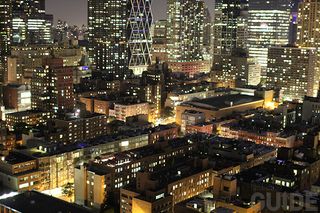
Higher sensitivity levels proved more of a challenge for this camera--at least in lab tests. The T5 consistently displayed more noise than Nikon's D5300 at every ISO level. At ISO 6400, 4.04 percent of the T5's image was grain compared with Nikon's 2.87 percent. The Nikon also offers a larger ISO range, going up to ISO 25,600, which is four times more light-sensitive than the T5's top ISO 6400. In actual photos, though, we didn't see that much noise in the Rebel's photos. For the price, its performance is also good.
Photos taken with the camera in low light sometimes displayed purple fringing -- a glow outlining the edges of darker objects against a brighter background. Some buildings in our shots of the Manhattan skyline, just after the sun had set on an overcast day, showed this effect. This was more pronounced in the RAW file of the same shot than in the JPEG.
MORE: Best Cameras
Chromatic aberration is sometimes caused by the lens, but should be corrected by the camera's processor. Many digital cameras encounter this issue, but more capable devices are better at fixing it. We took similar shots with the same lens attached to Canon's $1,200 70D DSLR, and the fringing was far less noticeable. For its price though, the T5 does a good-enough job of reducing the aberration (especially in JPEGs), and the distortion doesn't show up very often.
Video Quality
While you'll see great color and clarity in videos recorded with the T5, the camera's inability to focus quickly may cause you to miss important moments while shooting. In adequate light, we found the T5 capable of keeping subjects sharp as long as they were about the same distance away. Our clips of buskers performing acrobatics was mostly in focus. Subjects moving quickly, such as a girl doing a cartwheel, appeared slightly stretched, but that's a common artifact in most cameras using the nearly universal CMOS sensor technology. The T5 handled motion as well as or better than other cameras we've reviewed.
Our nighttime video of a musician playing the saxophone on a Times Square street had great colors, exposure and a nice shallow focus. Though the camera's built-in mic is only monaural, it did a good job of picking up the beautiful brassy notes playing amid the noise and flashing lights of Times Square. (There is no audio-in port for adding an external mic.) His fast-moving fingers appeared fluid. And despite his body swaying to the music, the camera kept him in focus.
While other cameras might have better autofocus in video mode (more on that later), the T5 delivers better exposure, color and clarity than its rivals. It did have some trouble keeping exposure consistent as it hunted for a focal point, though.
Overall, you might prefer to rely on manual focus when you film with the T5 due to the camera's terrible autofocus in video mode (more below). This could be cumbersome for those just learning the ins and outs of a DSLR. Those who see themselves shooting mostly indoors or still subjects, such as buildings or sculptures, will be happy with the T5, but others will need to learn how to manually focus well.
Autofocus, speed and battery
The T5 was zippy for most day-to-day shooting in traditional SLR mode (with the mirror down, using phase-detection AF). For the most part, the camera latched on to focal points almost immediately after I half-depressed the shutter button. It sometimes had trouble with low-contrast scenarios, such as a bowl of red soup on an orange table or buildings on the street at night.
With its top shutter speed of 1/4000 sec, you'll be able to depend on the T5 to capture quickly moving objects. I was able to freeze the motion of fast-waving hands and speeding cars.
At 3 frames per second though, the T5 was somewhat sluggish at capturing multiple shots in rapid succession. After four to five shots, the T5 had to pause for at least 10 seconds to write data to the memory card. During this time, you also can't view your photos.
MORE: How to Resize Your Photos for Easier Online Sharing
When shooting video, DSLRs flip up the mirror used in the viewfinder system to expose the sensor for continuous light capture. This mode disables the speedy phase-detection autofocus sensor that's active when shooting stills. The camera relies on the image sensor to perform contrast-detection autofocus — a generally slower method used on most point-and-shoot and cellphone cameras.
The T5 offers three autofocus modes in video capture -- Flexizone (one spot), Quick (more focus points) and Live (face-detection). You'll also have to make sure "AF w/ shutter button during (video recording)" is enabled to let you focus and refocus as you shoot by half-depressing the shutter button. This function is, oddly, disabled by default. Continuous focus (keeping a moving subject sharp) is not possible, according to the T5 instruction manual.
The T5 encountered some trouble focusing on faces in a crowd of people in Times Square at night. When we shot on Flexizone (single specified spot) focus and Live mode (face-detect), the camera only focused on faces that were relatively close to us, but couldn't latch onto those that were farther away.
In scenarios with less light, such as on a quiet Manhattan street at night, the T5 struggled to find points of focus. The camera hunted for a few seconds as I half-depressed the shutter button, and was unable to sharpen the scene at all. Not only did the Rebel readjust focus during the scene, it also readjusted exposure, making the video lighter and darker as the camera looked for a subject to latch onto.
Cameras at a comparable price, such as Samsung's NX mini mirrorless model ($500, with 3X zoom lens), were able to focus on multiple faces within the same scene at a greater distance. Like the T5 when in video mode, the NX mini has only contrast detection AF, but uses it more effectively. Nikon's mirrorless D3300 ($600) also offers better focus in video capture, keeping cars sharp as they moved toward the photographer.
MORE: A Digital Camera Glossary
Battery Life
With an included 860-mAh battery, the T5 is rated for up to 500 photos without flash and 410 if half are shot with flash. In Live view mode (with the LCD on), you'll get just 180 without flash and 170 with 50 percent flash use.
These estimates are based on the internationally recognized CIPA testing standards, and they appear to be accurate. During our time with the camera, we shot some 500 stills (only a handful with flash) and 13 short videos on one charge.
Design
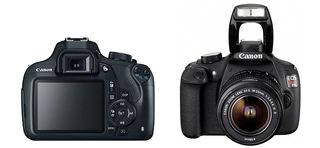
Measuring 5.1 x 3.9 x 3.1 inches and 15.3 ounces (body only), the Rebel T5 is compact and light enough for prolonged use (unless you attach a heavy lens to it). Despite its light weight, the camera feels solid and sturdy.
The 3-inch LCD monitor on the back of the T5 is not a touch screen and is fixed. You can't flip it up to take selfies or tilt it to frame oddly angled shots. When composing your shot through the viewfinder, basic settings, such as shutter speed, ISO level and aperture, are displayed along the bottom for easy reference.
Even though it's a basic rig, the T5 has a minimal set of connectivity options: USB, HDMI and cable release (for controlling the camera remotely). Its memory card slot accepts SD/SDHC/SDXC card formats. The T5 lacks a mic jack to enable stereo recording, as well as Wi-Fi, which is becoming a standard on most new cameras. Canon recommends you use an Eyefi memory card (starting at $50 for 8 GB) to add Wi-Fi capability to your T5.
Controls
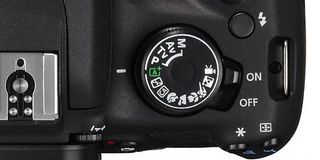
Right-handers will find the Rebel T5 easy to use with one hand. All its main controls are located along the right side -- two dials, 15 buttons and a switch.
You'll mostly use the Mode Dial (Auto, Aperture Priority, Manual, etc.) on the top right side, a Main Dial on the right behind the shutter button and the Quick Control button (labeled "Q") to the right of the LCD. Pressing the Q button brings up a screen packed full of all the key settings for your shot. These include shooting mode, shutter speed, aperture, ISO light sensitivity, exposure level, autofocus operation, metering mode and image format.
For more in-depth settings such as custom white balance, image quality, red-eye reduction and ISO speed settings, you'll have to press the Menu button to the bottom right of the LCD screen. To navigate the menu's many tabs, you'll have to use the four directional buttons (laid out in a circle) next to the screen and use the middle (Set) button to enter.
In our test of how easy it is to reach key settings, the T5 fared well. You'll need only one or two button presses to access and adjust such common functions such as ISO, focus mode and light metering. (Settings that have a dedicated button or knob, such as shutter speed, require 0 steps to access.)
As on other Canon models, it's ridiculously difficult to set custom white balance. The entire process takes 14 key presses, by which time you might have missed your shot. Another gripe was the lack of a dedicated button to switch to video mode; you'll have to turn the Mode dial all the way to the end to shoot video.
| Setting | Button presses to access | Function |
| Shutter | 0* | Length of exposure |
| Aperture | 0* | Amount of light let in |
| ISO | 1 | Light sensitivity |
| Focus Mode | 1 | Point or points used for focus |
| Light metering | 2 | Part of image with optimized exposure |
| Custom white balance | 14 | Tune overall color cast of image |
| Exposure compensation | 1 | Set auto exposure to be darker or lighter |
| Wi-Fi Sharing | N/A | Send images to smartphone, activate remote viewfinder |
| Video recording | 1 (turn dial) | Switch from photo to video and back |
| Play | 1 | View images or videos you've shot |
| Delete image | 1 | Remove image from card |
| Photo capture resolution | 2 | Number of megapixels |
| Photo capture quality | 2 | Amount of JPEG compression/detail, or RAW |
| Video capture quality | 5 | Resolution, frame rate and amount of compression/detail |
| Drive | 1 | Single photo, burst, timer, etc. |
* Measured in the relevant priority mode
Lenses
The Rebel T5 is commonly bundled with an 18-55 or 18-135mm zoom lens. We tested the latter, which delivered good colors and detail. Those who want a smaller overall package can pick the 18-55mm option.
We tested with Canon's $1,479 35mm F/1.4L USM prime (non-zooming) lens, which offered greater clarity and shallower depth of field than the kit lens, with a maximum f3.5 aperture. Those who want similar image quality can consider Sigma's 35mm f/1.4 DG HSM prime for Canon DSLRs, which is $500 cheaper than the Canon one.
If you need a prime lens for only food or portrait photography, Canon's EF 50mm f/1.8 II, also known as the "nifty fifty," is a great and affordable ($125) option.
The T5 is also compatible with a large variety of lenses, such as primes, zooms and wide-angles, from third-party makers such as Zeiss, Tokina and Tamron.
Bottom Line
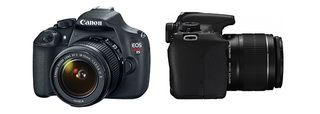
You can't really fault Canon for not changing up much in the beginner-friendly Rebel series over the years. The camera maker appears to have struck a chord with this line; Canon's Rebel T3i still ranks as one of the most popular DSLRs in the industry. With the T5, Canon brings incremental improvements in photo and video resolution, but we ache for more modern features such as Wi-Fi capability. We also wish the T5 offered faster focus when shooting video.
Those looking for better autofocus can consider the $600 Nikon D3300, which records videos of the same resolution at a better frame rate (60 fps) and showed little shutter roll. The Nikon has a cumbersome 10-minute limit on clip length, though. Samsung's mirrorless NX300 ($520 on Amazon) packs speedy phase-detection autofocus for live view and movie recording, which these two DSLRs lack. But its aggressive noise reduction blurs out detail in low light situations. For beginners, though, the $550 Rebel T5 is a great starter camera.
Specs table
Model name: Canon EOS Rebel T5/EOS 1200D
Megapixels: 18
Camera type: DSLR
Shooting speed: 3 fps
Sensor type: APS-C
Kit lens options: 18-55mm IS II , 18-135mm EF-S IS STM zoom
AF points and type(s): 9-point phase-detection; contrast detection in live view mode
Shutter speed range: 1/4000 to 30 secs
ISO range: 100 - 6,400
Main video resolutions/frame rates: 1920 x 1080 (30/25/24fps), 1280 x 720 (60/50 fps), 640 x 480 (30/25 fps)
Video file format: MOV
Built-in flash? Yes
Hot shoe? Yes
Card type: SD/SDHC/SDXC
Shots per charge (CIPA standard): 500
Wireless capability: None
Image stabilization: Select lenses
Dimensions and weight: Approx 5.1 x 3.9 x 3.1 inches; 15.3 ounces (body only)
- Best Waterproof and Rugged Cameras of the Year
- Canon EOS 70D DSLR: 7 Tips for Great Pics
- Sony RX 100 Review: Pocket Camera Could Kill Your DSLR
Follow Cherlynn Low @cherlynnlow and on Google+. Follow Tom's Guide at @tomsguide, on Facebook and on Google+.
Cherlynn is Deputy Editor, Reviews at Engadget and also leads the site's Google reporting. She graduated with a Master’s in Journalism from Columbia University before joining Tom's Guide and its sister site LaptopMag as a staff writer, where she covered wearables, cameras, laptops, computers and smartphones, among many other subjects.
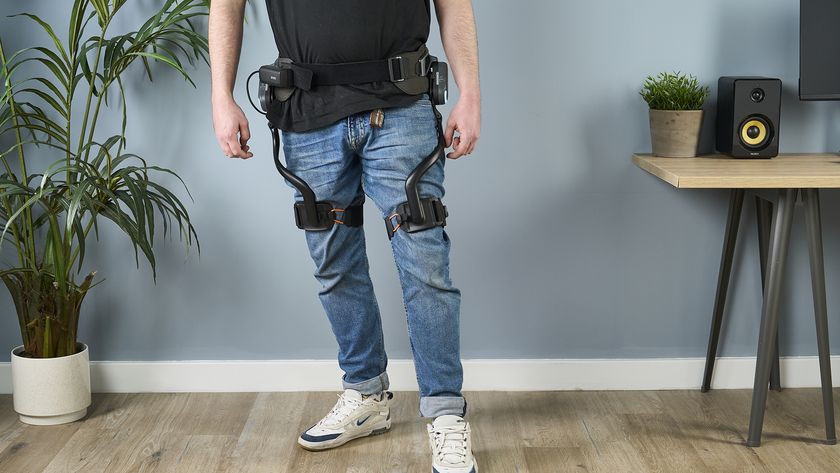
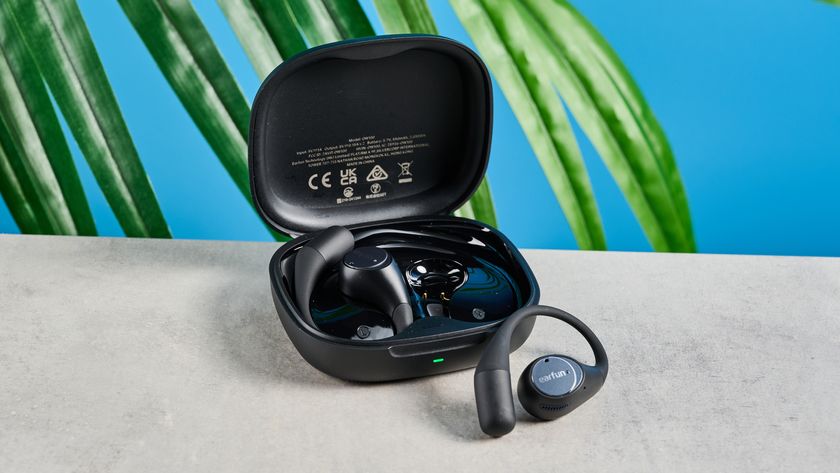

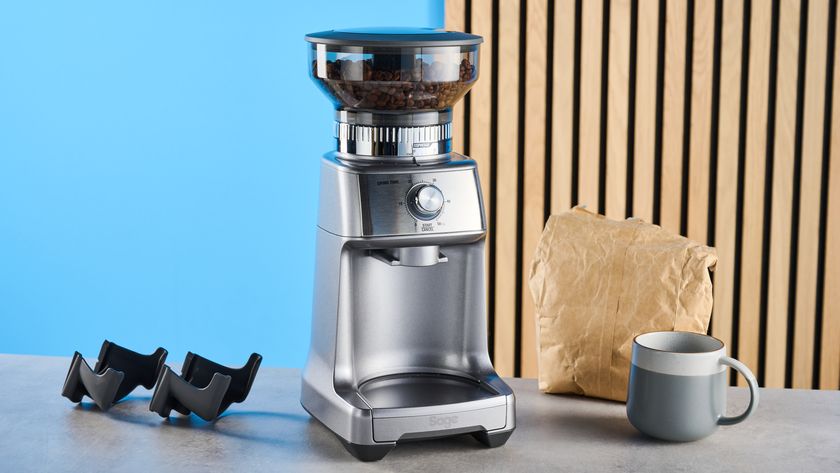

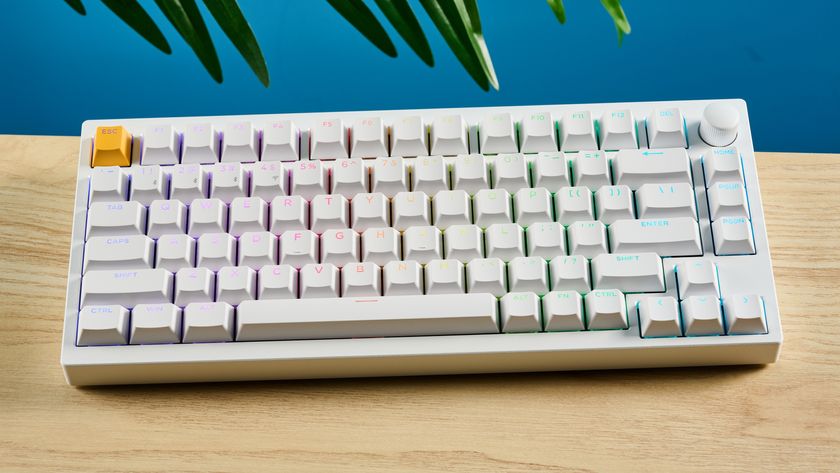
-
razor512 The sad thing with beginner level DSLR's, is that they are often more complicated and harder to use than a higher end one, for example a first time DSLR user will have an easier time using the canon 1Dx as compared to the t5 because of the easier controls (fewer steps to change certain settings, and more detailed controls allow users to get the shot they want rather than fighting with the many artifically imposed limitations of the entry level DSLR)Reply
With the entry level models, beginners will often have trouble getting a focus point right over the eye of someone when doing a portrait.
